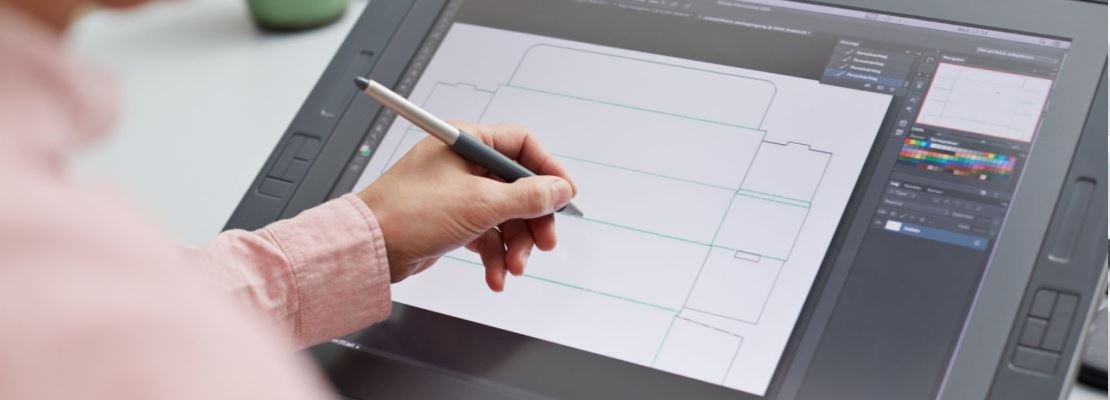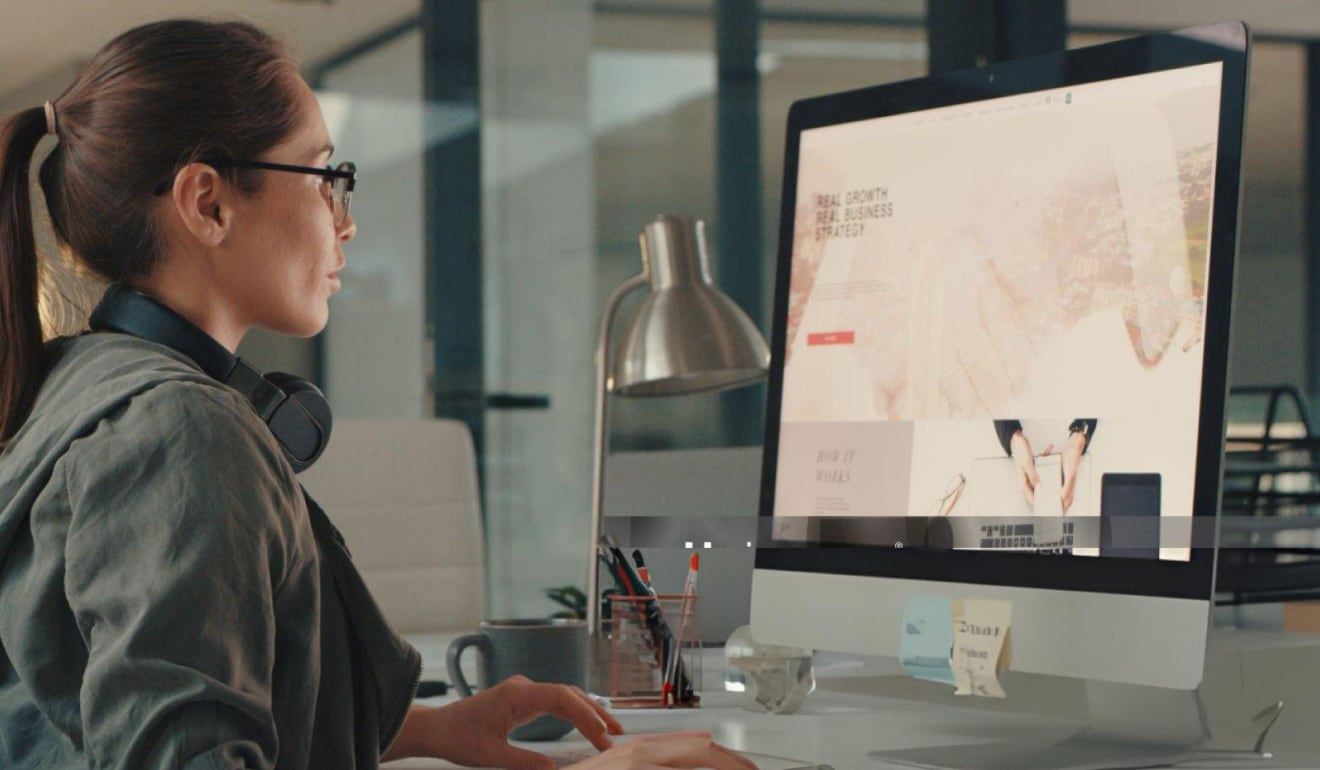With a commitment to continuous growth, the UX Cookbook constantly introduces new recipes, making it a go-to resource for UX enthusiasts.
Design Thinking — Why Does It Matter ?

Table Of Contents
- The Key to Innovation and Problem-Solving
- Why Design Thinking is Essential for Business Success
- Design Thinking in Action: Real-World Examples and Impact
- The Benefits of Incorporating Design Thinking into Your Workflow
- Design Thinking: A Mindset for Creativity and Empathy
- Design Thinking for Non-Designers: How Anyone Can Benefit
- Design Thinking vs. Traditional Problem-Solving Methods
- Design Thinking in the Digital Age: Adapting for the Future
- Design Thinking in Education: Teaching Critical Thinking and Creativity
- Design Thinking and Sustainability: Creating Solutions for a Better Future
Design thinking is a method of problem-solving that focuses on understanding the needs of users and coming up with innovative solutions. It's a human-centered approach that involves empathy, creativity, and iteration. In today's fast-paced business world, design thinking has become an essential tool for success. Whether you're a designer, a business leader, or just someone looking to improve your problem-solving skills, understanding and applying design thinking can have a big impact on your work and your life. In this blog post, we'll explore the basics of design thinking and why it matters, and provide examples of how it's being used in different industries to drive innovation and improve outcomes.
The Key to Innovation and Problem-Solving
Design thinking is a powerful approach to problem-solving that has been gaining popularity in recent years. It is based on the idea that by understanding the needs of the users and taking a human-centered approach to problem-solving, we can come up with innovative solutions that are tailored to their needs. This approach is characterized by a focus on empathy, creativity, and iteration, and it has been used to drive innovation in a wide range of industries, from technology and design to healthcare and education.
One of the key benefits of design thinking is that it allows us to think outside the box and come up with new and innovative solutions to problems. This is especially important in today's fast-paced business world, where staying competitive requires a constant flow of new ideas and solutions. By using design thinking, organizations can stay ahead of the curve and develop products and services that meet the needs of their customers in new and exciting ways.

Another benefit of design thinking is that it is a highly collaborative process that brings together people from different backgrounds and disciplines. This allows for a wide range of perspectives to be considered when developing solutions, which can lead to more effective and impactful outcomes.
Design thinking is not limited to designers, it can be applied by anyone in any field. It is a mindset, a way of approaching problems that can be learned and applied to any problem you might be facing. By applying design thinking to your work, you can improve your problem-solving skills and develop solutions that are tailored to the needs of your users.
Why Design Thinking is Essential for Business Success
Design thinking is not just a tool for product design and innovation, it can also be applied to business strategy and decision making. By using the design thinking process, businesses can gain a deeper understanding of their customers, identify new opportunities, and develop more effective and efficient business models.
One of the main advantages of design thinking for business is that it allows organizations to focus on the needs and desires of their customers. By taking a human-centered approach, businesses can create products and services that meet the needs of their customers in a more effective and efficient way. This can lead to increased customer satisfaction and loyalty, which in turn can lead to increased revenue and growth.
Design thinking also allows businesses to identify new opportunities for innovation and growth. By using the design thinking process, businesses can gain a deeper understanding of their customers and identify areas where they can improve or expand their offerings. This can lead to the development of new products and services, which can open up new revenue streams and help businesses stay competitive in their respective markets.
Design thinking also helps businesses in creating more efficient and effective operations. By understanding the needs and pain points of customers, employees and other stakeholders, businesses can identify ways to streamline operations, eliminate inefficiencies and improve overall performance.
Design Thinking in Action: Real-World Examples and Impact
Design thinking has been used in a wide range of industries and applications, and the impact can be seen in many areas of business and society. The following are a few examples of how design thinking has been used to drive innovation and improve outcomes in various fields:
- Healthcare: Design thinking has been used to improve the patient experience and outcomes in healthcare. By understanding the needs of patients and healthcare providers, hospitals and clinics have been able to design better facilities, equipment, and processes that improve the quality of care and make it more accessible.
- Education: Design thinking has been used to improve the effectiveness of education and make it more accessible to students of all backgrounds. By understanding the needs of students and teachers, educators have been able to develop more engaging and effective curriculum, learning materials, and teaching methods.
- Technology: Design thinking has been used to improve the user experience of technology products and services. By understanding the needs of users and creating prototypes, tech companies have been able to design more intuitive and user-friendly products that meet the needs of their customers.
- Social Impact: Design thinking has been used to address social and environmental issues in communities. By understanding the needs of communities and creating prototypes, non-profit organizations and government agencies have been able to design programs and interventions that create positive change and address pressing issues such as poverty, hunger, and environmental degradation.

These are just a few examples of how design thinking has been used to drive innovation and improve outcomes in various fields. The impact of design thinking can be seen in the form of improved products and services, increased customer satisfaction and loyalty, and a more efficient and effective use of resources.
The Benefits of Incorporating Design Thinking into Your Workflow
Design thinking can be applied in a variety of ways, but one of the most effective ways to use it is by incorporating it into your workflow. By doing so, you can reap the following benefits:
- Improved problem-solving: Design thinking is a powerful tool for solving problems, by understanding the needs of the users and taking a human-centered approach to problem-solving, you can come up with innovative solutions that are tailored to their needs.
- Increased creativity: Design thinking encourages you to think outside the box, by using a variety of techniques like brainstorming, prototyping and testing, you can generate more creative ideas and solutions.
- Better communication and collaboration: Design thinking is a collaborative process that brings together people from different backgrounds and disciplines. By working together, you can share ideas and perspectives, which can lead to more effective and impactful outcomes.
- Increased user engagement: By understanding the needs of the users and incorporating them into your products and services, you can increase their engagement and satisfaction which in turn can lead to increased revenue and growth.
- Improved efficiency: By understanding the pain points and inefficiencies of the users and stakeholders, you can identify ways to streamline your operations, eliminate inefficiencies and improve overall performance.
Design Thinking: A Mindset for Creativity and Empathy
Design thinking is not just a process or methodology, it's also a mindset. It's a way of approaching problems that emphasizes creativity and empathy. By adopting this mindset, you can become a more effective problem-solver and a more innovative thinker.
The first aspect of the design thinking mindset is creativity. Design thinking encourages you to think outside the box and come up with new and innovative solutions to problems. By using techniques like brainstorming, prototyping and testing, you can generate a wide range of ideas and explore different possibilities. This can lead to more creative and effective solutions.
The second aspect of the design thinking mindset is empathy. Design thinking is a human-centered approach to problem-solving, it requires understanding the needs and perspectives of the users. By putting yourself in their shoes and understanding their pain points, you can create solutions that meet their needs more effectively. Empathy is also important for building trust and creating positive relationships, which are essential for success in any field.
By adopting a design thinking mindset, you can become more creative, more empathetic, and a more effective problem-solver. You will be able to think in new ways and come up with innovative solutions to problems. You will also be able to understand and connect with your users and stakeholders in a deeper way, which can lead to more effective and impactful outcomes.
Design Thinking for Non-Designers: How Anyone Can Benefit
Design thinking is often associated with product design, but it's not limited to designers. In fact, anyone can benefit from understanding and applying design thinking. Whether you're a business leader, a marketer, a teacher, or just someone looking to improve your problem-solving skills, design thinking can help you think in new ways and come up with innovative solutions to problems.
One of the key benefits of design thinking for non-designers is that it provides a structured approach to problem-solving. By following the design thinking process, you can break down complex problems into smaller, more manageable pieces, and approach them in a logical and systematic way. This can make problem-solving more efficient and effective.
Another benefit of design thinking for non-designers is that it allows you to understand and connect with your users in a deeper way. By taking a human-centered approach, you can gain a better understanding of the needs, perspectives, and pain points of your users, which can lead to more effective and impactful solutions.
Design thinking is also a highly collaborative process, it brings together people from different backgrounds and disciplines to work together. This allows for a wide range of perspectives to be considered when developing solutions, which can lead to more effective and impactful outcomes.
Design Thinking vs. Traditional Problem-Solving Methods
Design thinking is often compared to traditional problem-solving methods, such as the scientific method or the engineering design process. While these methods can be effective for certain types of problems, design thinking offers a unique set of benefits that make it particularly well-suited for certain types of problems.

One of the main differences between design thinking and traditional problem-solving methods is the emphasis on empathy and user-centeredness. Design thinking is a human-centered approach that emphasizes understanding the needs and perspectives of the users. Traditional problem-solving methods, on the other hand, often focus on finding the most logical or efficient solution, regardless of whether it meets the needs of the users.
Another difference is the emphasis on iteration and prototyping. Design thinking encourages you to develop multiple solutions and test them with users to see which one works best. Traditional problem-solving methods often focus on finding the one correct solution.
Design thinking also encourages creativity, brainstorming and divergent thinking, which allows for generation of a wide range of ideas and solutions. Traditional problem-solving methods often focus on converging to a single solution.
Design Thinking in the Digital Age: Adapting for the Future
Design thinking has become more important than ever in the digital age, where technology and innovation are advancing at a rapid pace. As technology continues to evolve, it's essential for businesses and organizations to stay ahead of the curve and adapt to the changing needs of their customers.
One of the main ways that design thinking can help organizations adapt to the digital age is by providing a framework for understanding and designing for emerging technologies. By using design thinking, businesses can gain a deeper understanding of the needs of their customers and identify new opportunities for innovation in areas such as artificial intelligence, the Internet of Things, and virtual reality.
Design thinking can also be used to improve the user experience of digital products and services. By understanding the needs of users and creating prototypes, businesses can design more intuitive and user-friendly digital products and services that meet the needs of their customers.
Design thinking also encourages collaboration and iteration, which can be especially important in the digital age where technology is constantly evolving. By working together and iterating on solutions, businesses can stay agile and adapt to the changing needs of their customers.
Design Thinking in Education: Teaching Critical Thinking and Creativity
Design thinking can be a valuable tool in education, as it can help students develop critical thinking and creativity skills. By understanding and applying design thinking, students can learn to approach problems in a structured and systematic way, and come up with innovative solutions that meet the needs of their users.
One of the main ways that design thinking can be used in education is by teaching students how to think like designers. By learning the design thinking process, students can learn how to approach problems in a logical and systematic way, and how to come up with innovative solutions.

Design thinking can also be used to teach students about empathy and user-centeredness. By understanding the needs and perspectives of their users, students can learn to develop solutions that are tailored to their needs.
In addition, design thinking encourages creativity, brainstorming and prototyping, which can be valuable skills for students to develop. It can help them to generate a wide range of ideas and explore different possibilities.
Design thinking can be applied in various subjects such as mathematics, science, social studies, and literature, to help students approach problems in a more creative and empathetic way.
Design Thinking and Sustainability: Creating Solutions for a Better Future
Design thinking can also be used to address the pressing issue of sustainability and create solutions that are both environmentally friendly and economically viable. By understanding the needs of users, communities and the environment, and taking a human-centered approach to problem-solving, design thinking can be used to create sustainable products, services, and systems.
One of the main ways that design thinking can be used to address sustainability is by identifying ways to reduce waste and increase efficiency. By understanding the needs and pain points of users, businesses and organizations can identify ways to streamline their operations and eliminate inefficiencies, which can lead to a more sustainable use of resources.Design thinking can also be used to create sustainable products and services. By understanding the needs of users and the impact of products and services on the environment, businesses can design products and services that are more environmentally friendly.

Design thinking can also be used to create sustainable systems, such as transportation and energy systems, by understanding the needs of users and communities and taking a holistic approach to problem-solving.
In conclusion, Design Thinking is a powerful tool for innovation and problem-solving. It is a human-centered approach that emphasizes empathy, iteration, and prototyping. It can be applied in various fields such as business, healthcare, education, technology, and social impact. Design thinking helps organizations to focus on the needs and desires of their customers, identify new opportunities for innovation, and develop more effective and efficient operations. It can also be used in the digital age to stay ahead of the curve and adapt to the changing needs of customers. In education, it can help students to develop critical thinking and creativity skills. Furthermore, it can also be used to address sustainability and create solutions that are environmentally friendly and economically viable. By understanding and applying design thinking, businesses and individuals can stay competitive, increase customer satisfaction, drive growth and revenue and create positive change in the world
FAQ
Design Thinking is a human-centered problem-solving approach that emphasizes empathy, iteration, and prototyping.
The benefits of using Design Thinking include a focus on the needs and desires of customers, identification of new opportunities for innovation, development of more effective and efficient operations, and the creation of sustainable solutions that are environmentally friendly and economically viable.
Design Thinking differs from traditional problem-solving methods in that it places an emphasis on empathy and user-centeredness, encourages iteration and prototyping, and fosters creativity, brainstorming and divergent thinking.
Design Thinking can be used in the digital age to help businesses understand and design for emerging technologies, improve the user experience of digital products and services, encourage collaboration and iteration, and stay agile and adapt to changing customer needs.
Design Thinking can be used in education to help students develop critical thinking and creativity skills, teach empathy and user-centeredness, encourage creativity, brainstorming and prototyping, and approach problems in a more structured and systematic way.
Design Thinking can be applied in various fields such as business, healthcare, education, technology, and social impact.
The design thinking process involves five stages: empathize, define, ideate, prototype, and test.
Design Thinking helps businesses by providing a framework for understanding and designing for the needs of their customers, identifying new opportunities for innovation, and developing more effective and efficient operations.
Empathy is a critical component of Design Thinking, as it allows businesses and individuals to understand the needs and perspectives of their customers and create solutions that are tailored to their needs.
Design Thinking can be used to address sustainability by identifying ways to reduce waste and increase efficiency, creating sustainable products and services, and designing sustainable systems, such as transportation and energy systems, that meet the needs of users and communities.









